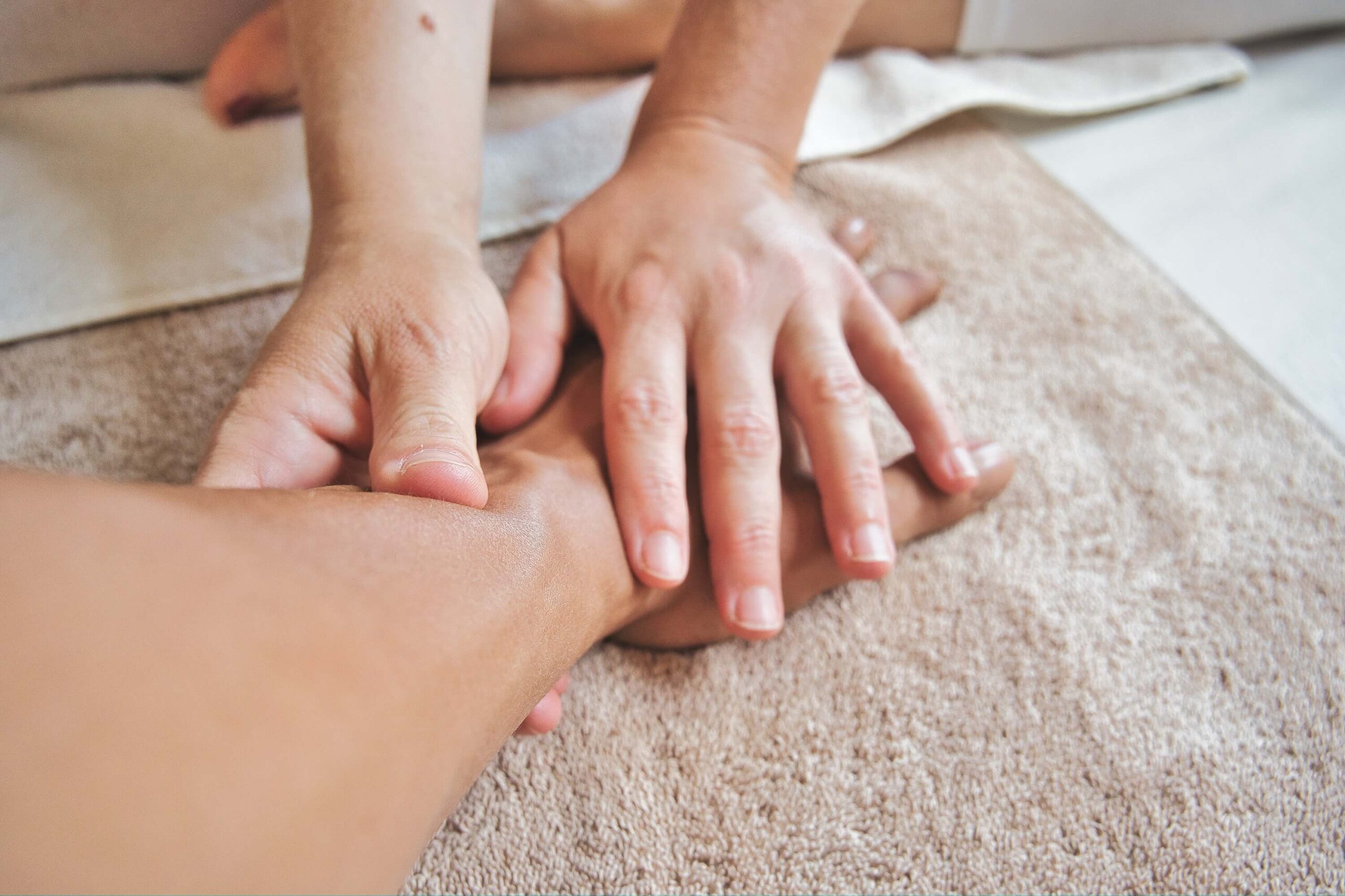Massage therapy is one of the oldest forms of health care, used for centuries to treat various ailments and injuries. While today many people think of massage therapy as a luxury spa treatment, many different massage modalities can address specific physical and mental health needs. Here we describe some of the most common modalities and their therapeutic benefits.
Swedish Massage

Swedish massage is a type of therapy that has been around for centuries. It is based on the classic techniques of Swedish gymnastics. This type of massage focuses on manipulating superficial and deeper layers of muscle and connective tissue to relax the muscles, increase circulation, reduce tension, and promote overall well-being. The goal of Swedish massage is to help reduce stress and improve relaxation by applying pressure to various parts of the body. This massage releases tight muscles and knots, increases flexibility, creates balance in the bodys energy systems, and improves overall posture.
During a Swedish massage session, a therapist uses kneading strokes, gentle stretching, light tapping strokes, and circular rubbing movements with varying amounts of pressure. These motions are all designed to help relax tight muscles and trigger points to improve blood circulation. Depending on the clients needs, other forms of touch may also be used during a Swedish massage, such as vibration or deep tissue work where more direct pressure is applied.
The benefits associated with Swedish massage include increased relaxation; improved circulation; improved range of motion; reduced pain; enhanced immunity through stimulation lymphatic system; reduction in headaches; improved sleep quality; reduced stress levels; improved mental clarity; invigoration through stimulation of sensory nerve endings; improved recovery time from injuries or accidents due to increased oxygen delivery to tissue cells; reduction in chronic pain symptoms like arthritis or sciatica due to loosening tight muscles or adhesions that can cause inflammation or pain.
Deep Tissue Massage

Deep tissue massages are therapeutic massages focusing on the deeper muscles and connective tissue layers. Unlike many other types of massage, deep tissue massage is designed to target knots and areas of chronic tension. Through a combination of slow strokes, deep kneading, and specific pressure points, deep tissue massage can help to release chronic muscle tension and restore balance in the body.
This type of massage can be applied with both light-touch techniques or with more vigorous pressure depending on the needs of the individual. It’s not just for people who have injured themselves, but it can help those recovering; anyone can benefit from this muscular therapy! Deep tissue massages are often a great way to reduce stress by releasing tight muscles, improving circulation, promoting relaxation, and relieving pain related to conditions such as sciatica, fibromyalgia, carpal tunnel syndrome, myofascial pain syndrome (MPS), arthritis, headaches, and temporomandibular joint (TMJ) disorder.
To ensure clients receive the most beneficial treatment possible, therapists typically combine several techniques during a deep-tissue massage session. Trigger point therapy is one such technique that can alleviate muscle spasms and improve the range of motion in areas where tension tends to accumulate. Other popular treatments used with deep tissue massages include myofascial release therapy (MRT), Swedish massage techniques such as effleurage and petrissage, and Neuromuscular Technique (NMT). These all work together to decrease inflammation while helping to relax tight muscles.
In addition to providing physical benefits like increased flexibility and mobility throughout your body’s soft tissues and relief from pain caused by pinched nerves or muscle strain, deep-tissue massages also have mental health benefits! Stress relief is one key component in deep tissue massage – many clients find that these sessions help them relax and reset after long days at work or stressful events. Deep breathing exercises during these sessions can further promote relaxation; this helps the body let go while focusing on being present now rather than ruminating on past or future events that cause anxiety or depression.
Sports Massage

A sports massage is a specialized massage technique designed to help athletes improve their performance and reduce the risk of injury. It can also help with muscle and joint pain, flexibility, recovery time, and overall performance. Sports massages are often used by professional athletes or those heavily involved in physical activities, such as running or cycling.
Sports massage increases blood flow, promotes circulation, helps flush out toxins and metabolic waste products, gives muscles more oxygen, breaks up scar tissue, helps increase flexibility and range of motion, decreases muscle tension and stiffness, relaxes muscles, and reduces stress levels. The massage should be tailored to the specific needs of each athlete based on their activity level and type of sport.
Sports massages use a variety of techniques, including kneading the muscles of the arms and legs using hands; making circular movements; friction techniques which involve using thumbs to apply pressure along the length of the muscle; deep pressure, where massage therapists use their forearms to apply pressure; stretching; trigger point therapy to relieve tension in specific areas; passive joint mobilization where joints are slowly moved through a range of motion while getting the massage therapy; hot stone therapy which involves placing heated stones on affected areas to improve circulation.
The therapist should discuss any concerns that an athlete may have before beginning treatment so that they can tailor the massage accordingly. After treatment, athletes can expect improved circulation leading to increased energy levels and a better recovery rate from exercise-induced fatigue. Sports massages can benefit amateur athletes who train for competition and recreational athletes who are just trying to stay healthy.
Reflexology

Reflexology is a holistic treatment method involving specific pressure techniques on the feet, hands, or ears to stimulate the bodys natural healing process and relieve various health issues. This ancient practice is based on the idea that specific points on the body are connected to every organ and system. By applying pressure to areas and unlocking these energy pathways, practitioners believe they can help restore balance and harmony within the body and create a state of well-being.
Reflexologists use different hand techniques such as thumb presses, kneading, rubbing, finger presses, and more to work on reflexes found on both feet. Some practitioners even massage the hands or ears to activate energy points in other parts of your body. During each session, they will focus on any problem areas such as tight muscles or areas of discomfort while working more generally across all reflex points.
This restorative form of therapy has been used for centuries in many cultures worldwide. It is traditionally believed that reflexology works by stimulating nerve endings that unblock qi (energy) throughout your body, helping to relax muscles, improve circulation, reduce stress levels, encourage detoxification, and increase healing processes. Additionally, it has been shown to help ease pain caused by conditions such as arthritis; promote relaxation; boost immunity; reduce fatigue; alleviate depression; relieve anxiety; enhance mental clarity; improve sleep quality, and much more!
Reflexology is safe for everyone, but choosing a qualified practitioner experienced in this ancient art form is essential. Always check their qualifications when looking for a therapist and ensure you feel comfortable with them before booking an appointment.
Thai Massage

Thai massages, also known as Thai yoga massages, are a form of traditional healing art that involves specific yoga-like stretching and pressure point massage techniques. Originating in Thailand, this type of massage is based on the belief that energy lines flow through the body, releasing blocked energy. This therapeutic massage has been practiced for centuries and is considered a holistic approach to physical and mental well-being.
During a Thai massage, a masseuse uses their hands, elbows, knees, feet, and forearms to apply pressure along these energy lines. This helps release tension from tight muscles and improve circulation around the body for better relaxation. In addition to stretches designed to open the body’s energy network, practitioners may also use aromatherapy oils or hot stones during sessions.
Benefits of Thai massage can include improved flexibility and mobility; increased circulation throughout the entire body; reduced stress levels; increased clarity of thought; detoxification of physical toxins; improved postural alignment; enhanced organ function; reduced inflammation and tension in joints; increased mental focus and clarity; a greater sense of overall wellbeing, mental balance and relaxation; improved restful sleep patterns. Additionally, this massage can help boost immunity against illness or injury by improving lymphatic flow throughout the body. Thai massages are an effective way to improve physical health and mental well-being when done correctly with an experienced masseuse. Combined with other self-care forms, such as exercise or meditation, it can significantly benefit ones overall health and wellness.
Shiatsu Massage
Shiatsu massage is a traditional Japanese bodywork that has been practiced for centuries. It involves using pressure, stretches, and acupressure points to manipulate and realign the body’s energy meridians. Shiatsu massage helps to reduce muscle tension and stress, improve circulation, and promote relaxation.
Shiatsu massage is typically done on a mat or futon on the floor with the client clothed in loose-fitting attire. The therapist will use thumbs, palms, fingers, elbows, and sometimes even knees to apply firm pressure along the bodys energy pathways. This pressure can range from gentle stroking to deep kneading. The therapist may also stretch the limbs or body to help balance qi (energy) flow throughout the body.
During a shiatsu session, clients may experience deep relaxation as their muscles release any tension they have been holding onto. Commonly reported benefits to include improved joint mobility and flexibility, increased range of motion in joints and muscles, relief from chronic pain conditions such as fibromyalgia and arthritis, improved digestion and elimination processes, enhanced circulation that helps bring oxygen to cells more efficiently, greater homeostasis within organs systems (such as digestive system), strengthened immune system response and overall feelings of well-being.
Shiatsu massage can be tailored to target specific physical issues or ailments while providing holistic health benefits that address both physical symptoms and underlying root causes that can lead to disease or dysfunction. It can be used with other treatments, such as Traditional Chinese Medicine practices like acupuncture or medical treatment plans prescribed by your doctor.
Lymphatic Drainage Massage

Lymphatic drainage massages are massage therapy designed to help with the natural cleansing process of the body’s circulatory system. This kind of massage helps increase lymph flow, which in turn helps reduce swelling and boost the immune system. Generally, lymphatic drainage massages focus on areas where lymph nodes or vessels may be blocked or stagnant due to trauma, stress, or injury. The gentle massage technique encourages eliminating waste products from cells and tissues, which can ultimately result in improved health and well-being.
A professional massage therapist typically uses a light touch for lymphatic drainage massages. A combination of kneading and circular motions is used on the affected area to dislodge blockages and improve fluid movement throughout the body. To ensure proper drainage, pressure is applied in specific directions along the bodys natural pathways while encouraging flexibility within your muscles and joints.
This massage can help reduce pain associated with conditions such as lymphedema, fibromyalgia, headaches, neck issues, sinus congestion, allergies, and swollen ankles and feet. In addition to aiding physical healing processes, it may also benefit emotional healing by reducing stress levels and helping with relaxation. Some people feel relief after just one session, while others require multiple sessions for optimal results.
When performed by a qualified professional, lymphatic drainage massages offer numerous benefits, including boosting energy levels; improving blood circulation; easing muscle tension; promoting overall health; and improving sleep quality. Suppose you suffer from symptoms related to poor lymph flow or other physical problems. In that case, it is recommended that you consult your healthcare provider before beginning treatment with this type of massage therapy.
Explore the licensed therapists on MySpaList to find the perfect Spa or therapist that caters to your physical and mental health needs. With a comprehensive understanding of various massage therapy modalities and their benefits, you can easily browse the site and locate the ideal therapist.




